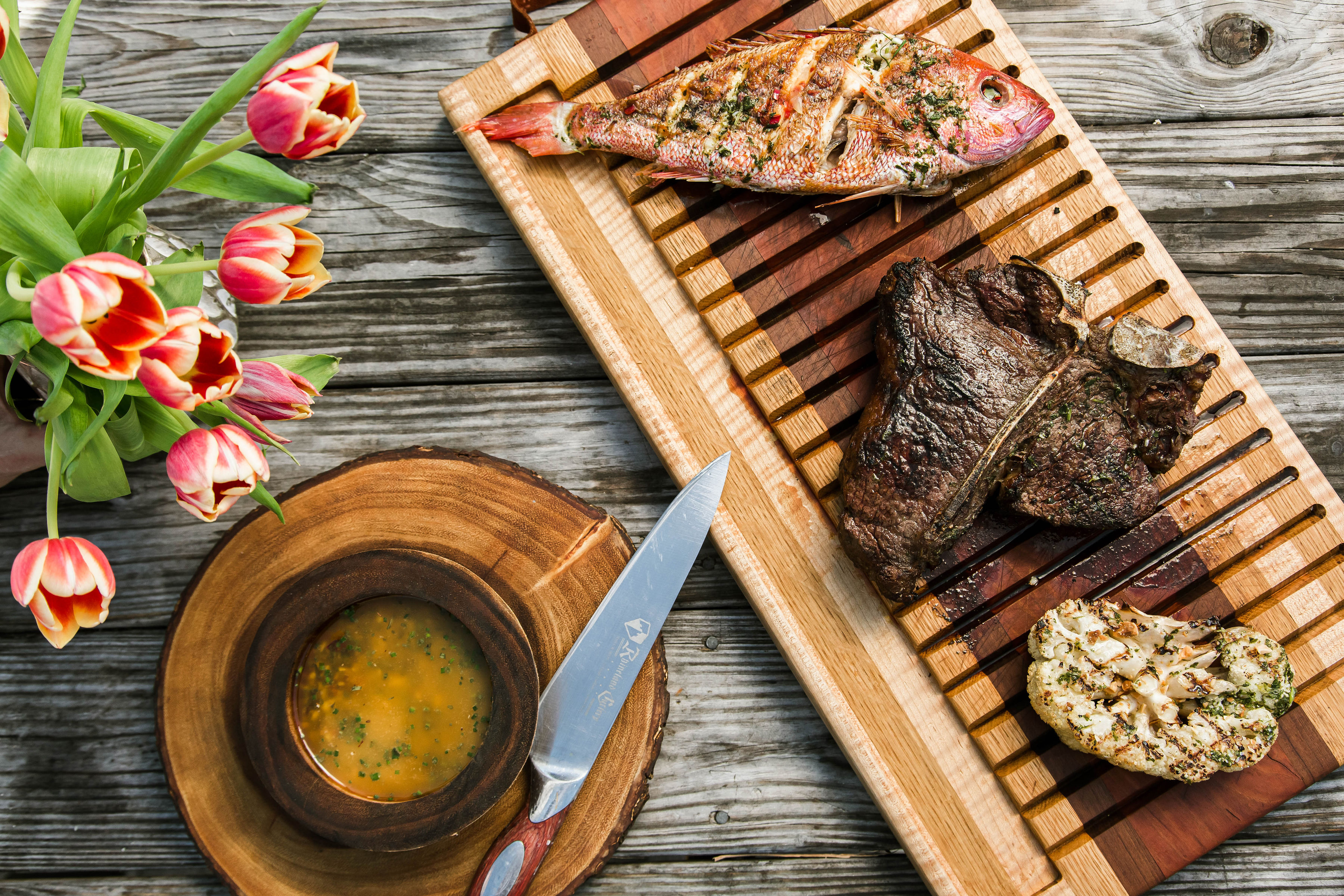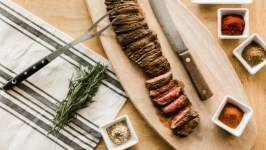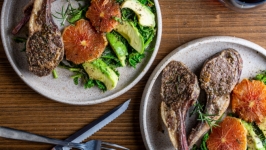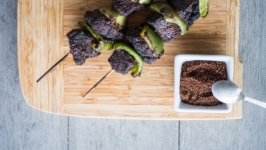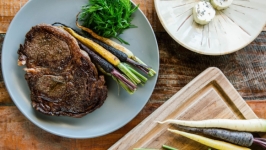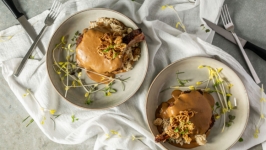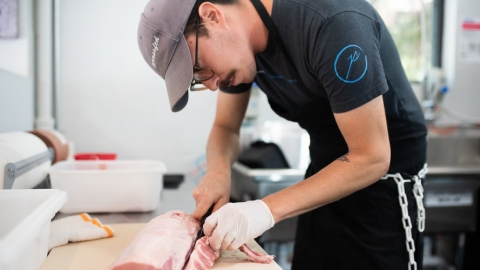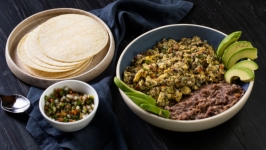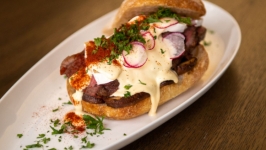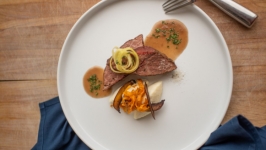How to Grill a Steak
When I started out in the restaurant business, I worked at a steakhouse. Back then, the goal was to grill steaks with diamond markings as a sign of a well-cooked piece of meat. These days, reverse searing, the technique of slow-cooking a steak or roast before finishing it off with a hot sear, has become the preferred method by most chefs. In this technique, the meat is cooked slowly on indirect heat until the internal temperature reaches about five degrees under your desired temperature. High heat searing then brings the meat to the right temperature, resulting in a fork-tender steak with a perfect crust.
THE SCIENCE OF HEAT
Aside from proper seasoning, the most important contributor to stellar flavor in grilled steaks is the Maillard reaction, named after Louis-Camille Maillard. Not to be confused with caramelization, the Maillard reaction is the chemical reaction between amino acids and reducing sugars when heated at high temperatures, resulting in a non-enzymic browning that gives food its distinctively delicious roasted flavor and aroma. This can best be achieved in two ways: conduction or infrared heat.
Conduction is the actual transference of energy by direct contact with a good conductor such as steel and cast iron. Infrared is energy produced from very hot coals or flames that transfer heat to the surface of a steak using waves of energy rather than contact. This can produce a beautiful crust on a steak. Cooking on red hot grill grates will produce attractive grill marks but only 70% of the steak will have good browning for flavor. I find that turning and flipping the meat often over high heat coals produces a beautiful even crust and makes for the best tasting steak you can possibly eat.
THE RIGHT CUT
Ribeye, porterhouse and spinalis (ribeye cap) are all great cuts of meat for the grill. Ideally, steaks should be 1-½ to 2 inches thick to form a nice charred crust without overcooking, with good marbling to guarantee a juicy and tender cut. Baste with either clarified butter or infused oil every time you flip the meat. When you grill a steak, the edges dry out and the juices from the center naturally move into the open pores. When you baste, those pores pull in the flavor of the butter or infused oil and keep the delicious juices where they belong, inside the steak. Season aggressively and season often. I baste and re-season my steaks at every flip and turn.
Kosher or sea salt is a must. Table salt is too intense, harder to control and treated with iodine. Throw the salt shaker in the trash – you want to feel the salt crystals leaving your fingertips one by one. Mastering this feeling will give you the ability to properly season even when you’re blindfolded.
GRILLING MYTHS
Only turn and flip the steak once.
Nope, this is not the way. Steaks should be flipped at least three times during cooking. This allows the surface of a steak to take a break from the heat and cool down while the center of the steak is catching up. If you leave it on one side for too long you'll overcook the outside before the center reaches your desired temperature. All grey with a small medium-rare sliver is not ideal.
Bring the meat to room temperature before cooking.
This is only true with thicker steaks or roasts. If you are cooking a room temperature steak less than 2 inches thick on a home grill (which is usually a much lower heat than a commercial grill) you are going to overcook the meat before you get any crust or browning. I've actually gone as far as freezing a thin steak for 30 minutes so it is cold enough to get a good crust before the center overcooks.


